5 things to know before dethatching your lawn
Remove and refresh
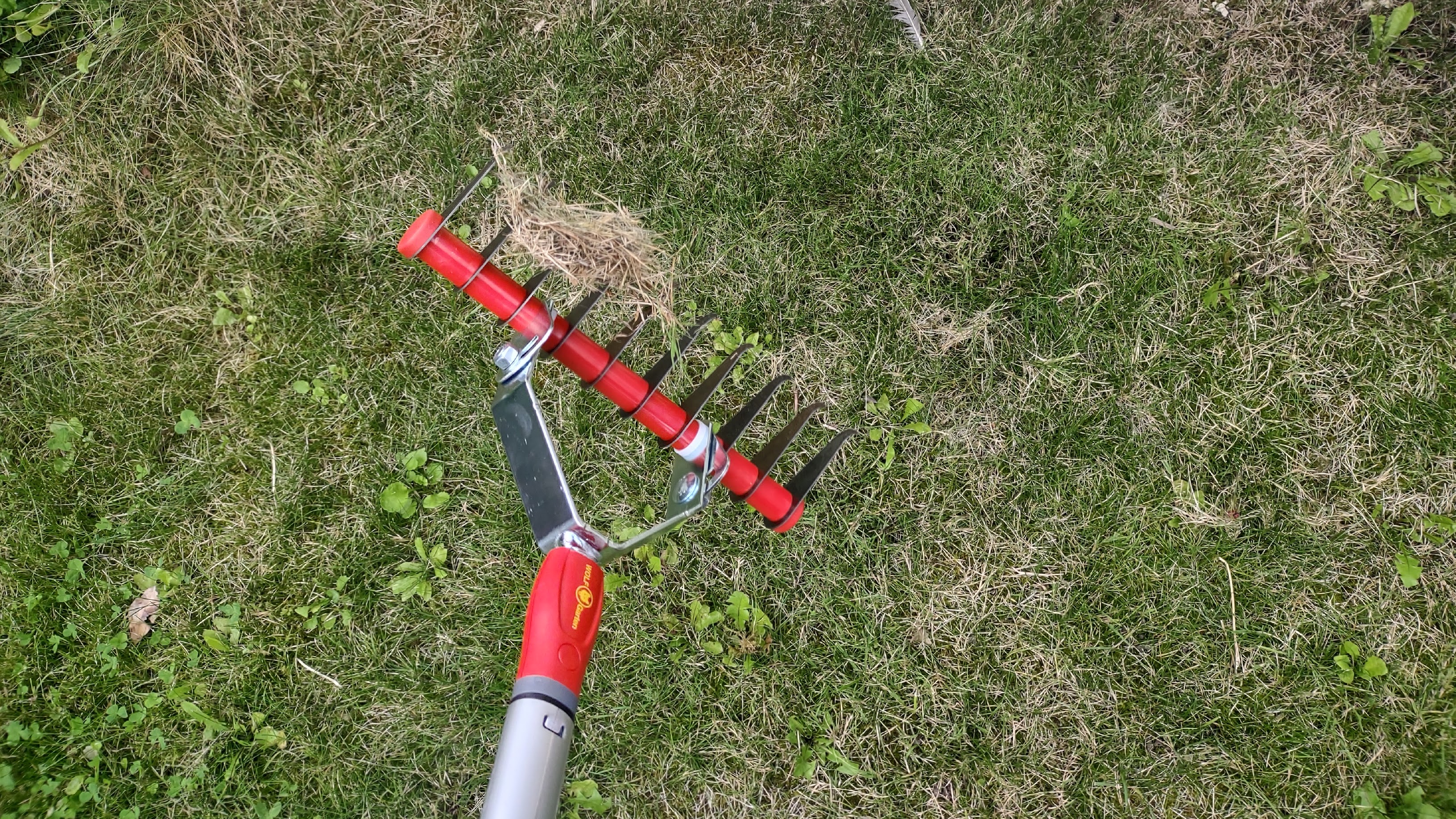
Learning how to dethatch your lawn will help you to control the level of excess plant matter among the grasses. In particular, dethatching enables you to remove some of the thatch layer, which is a natural build-up of decaying grass between the roots and shoots.
Thatch often promotes lawn health – but when the thatch layer accumulates to a depth of over ½-inch, it can block the flow of water and fertilizer to the roots, causing dehydration and malnourishment of the grass plant. This is where dethatching can help.
Dethatcher tools come in many types, including multi-purpose walk-behind tools, tow-behind tractor attachments, and handheld rakes. These tools are built to do a great job of removing just enough thatch, without ripping up too much healthy grass. However, improper use of a dethatcher may leave you with a very bare and patchy lawn that struggles to regrow. It’s a job that should be done with care and consideration for the grass.
- Dethatcher. This is a tool used to pull up thatch from the lawn. It could be a handheld manual dethatcher, or a powered electric or gas model. For this guide, our writer used a Wolf-Garten UGM3 Dethatching Rake Head ($65, Amazon (US)/ £35, Amazon (UK)), with a compatible handle (sold separately). The UGM3 can be used for either dethatching or scarification, depending on how deeply you dig it into the lawn.
- Watering can or sprinkler system
- Grass seed (optional)
Before you start dethatching, double-check to determine that your lawn could genuinely benefit from this treatment. Thin, patchy grass, and a thick, spongy layer of thatch are good indicators that dethatching may be appropriate for your lawn.
Quick steps for how to dethatch a lawn
- Remove objects such as sprinkler heads, piping and wiring from the lawn
- Move the dethatcher across the lawn surface to pull up a layer of thatch
- Repeat until you’ve pulled up the desired amount of thatch
- Remove any residual pulled thatch from the lawn surface
- Water the grass and scatter grass seed over any bare patches (optional)
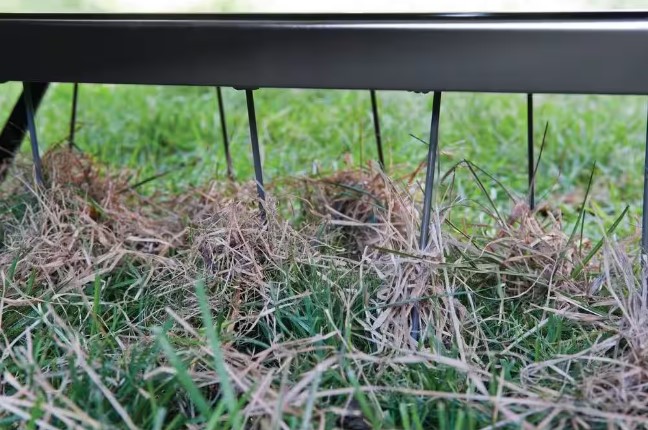
Step by step guide: How to dethatch a lawn
1. Remove objects

It’s not safe to use a dethatcher on a lawn that has objects on the surface – and that goes double if your dethatcher is powered by electricity or gas. Do a thorough sweep of the lawn, and remove any objects that may be vulnerable or dangerous. Pay special attention to items such as sprinkler heads, or boundary cables for a robot lawnmower.
2. Move the dethatcher across the lawn surface to pull up a layer of thatch

First, make sure your thatcher is properly configured, with any relevant dethatcher attachment in place, and ready to dethatch at your chosen depth. Then, use the dethatcher to pull up a layer of thatch across the entire surface of the lawn. For thorough dethatching, you’ll need to dig fairly deep. Our writer chose to dethatch his lawn lightly, to preserve his preferred depth of thatch.
3. Repeat until satisfied
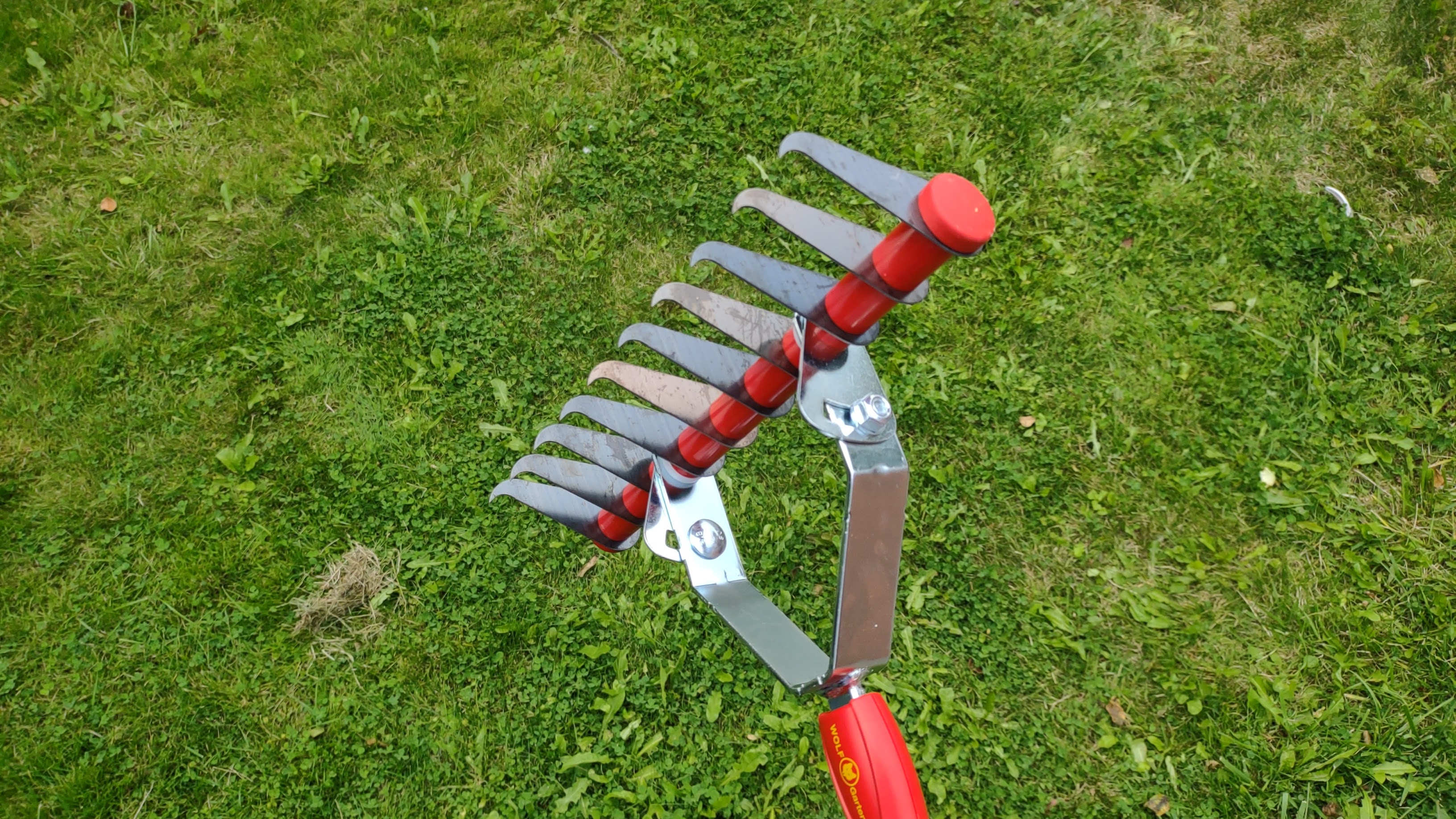
It may take several passes to pull up the desired amount of thatch. Try dethatching up-and-down the lawn, and then across it, for thorough coverage. Stop dethatching as soon as you’re happy with the amount of thatch removed.
4. Remove residual thatch
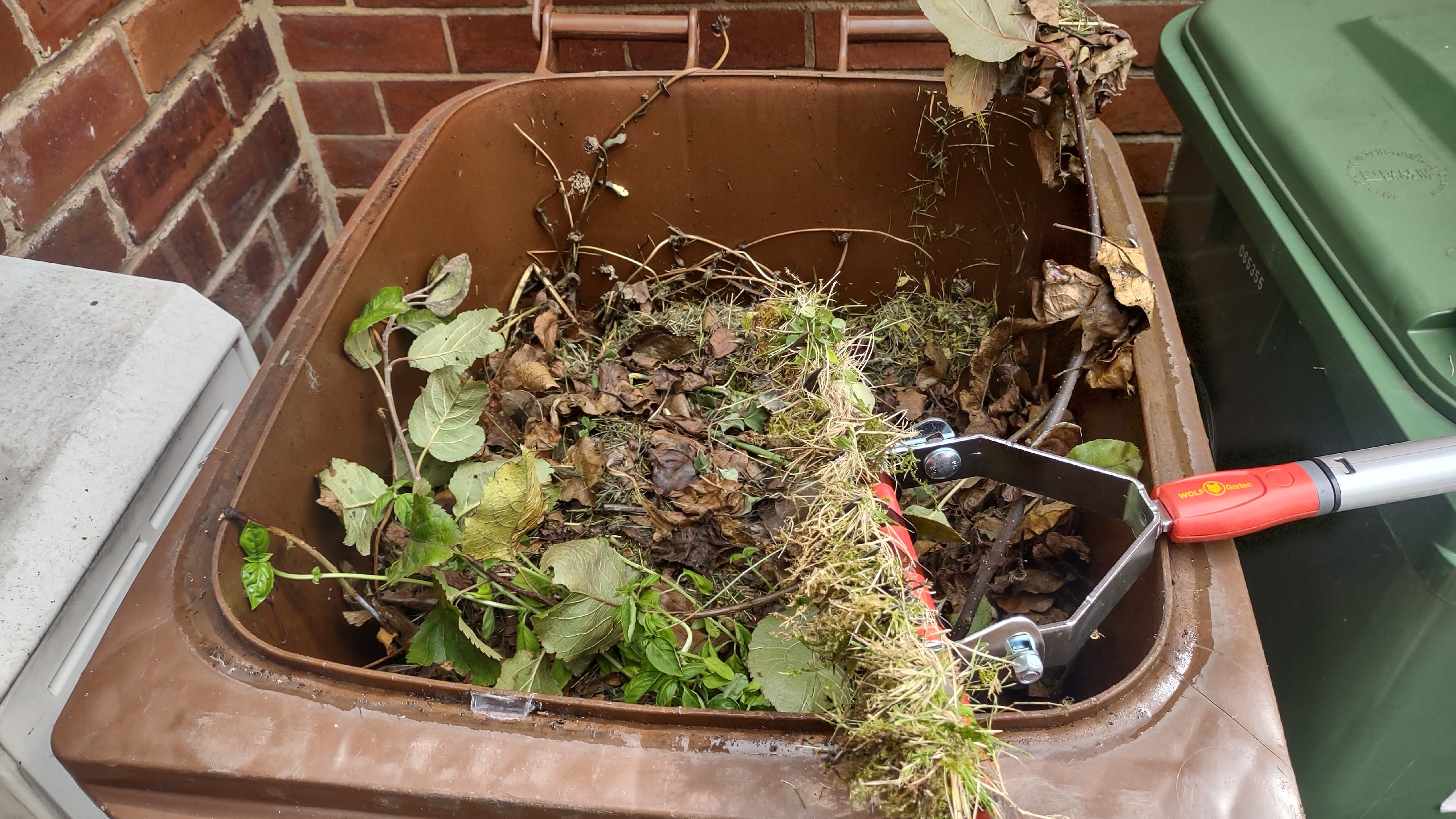
Pulled thatch will often pile up in neat rows of brown-ish plant matter, after dethatching. This excess material can be removed for composting or disposal. Don’t leave the pulled thatch on the surface, as it will likely contain the seeds of weeds.
5. Water and re-seed (optional)
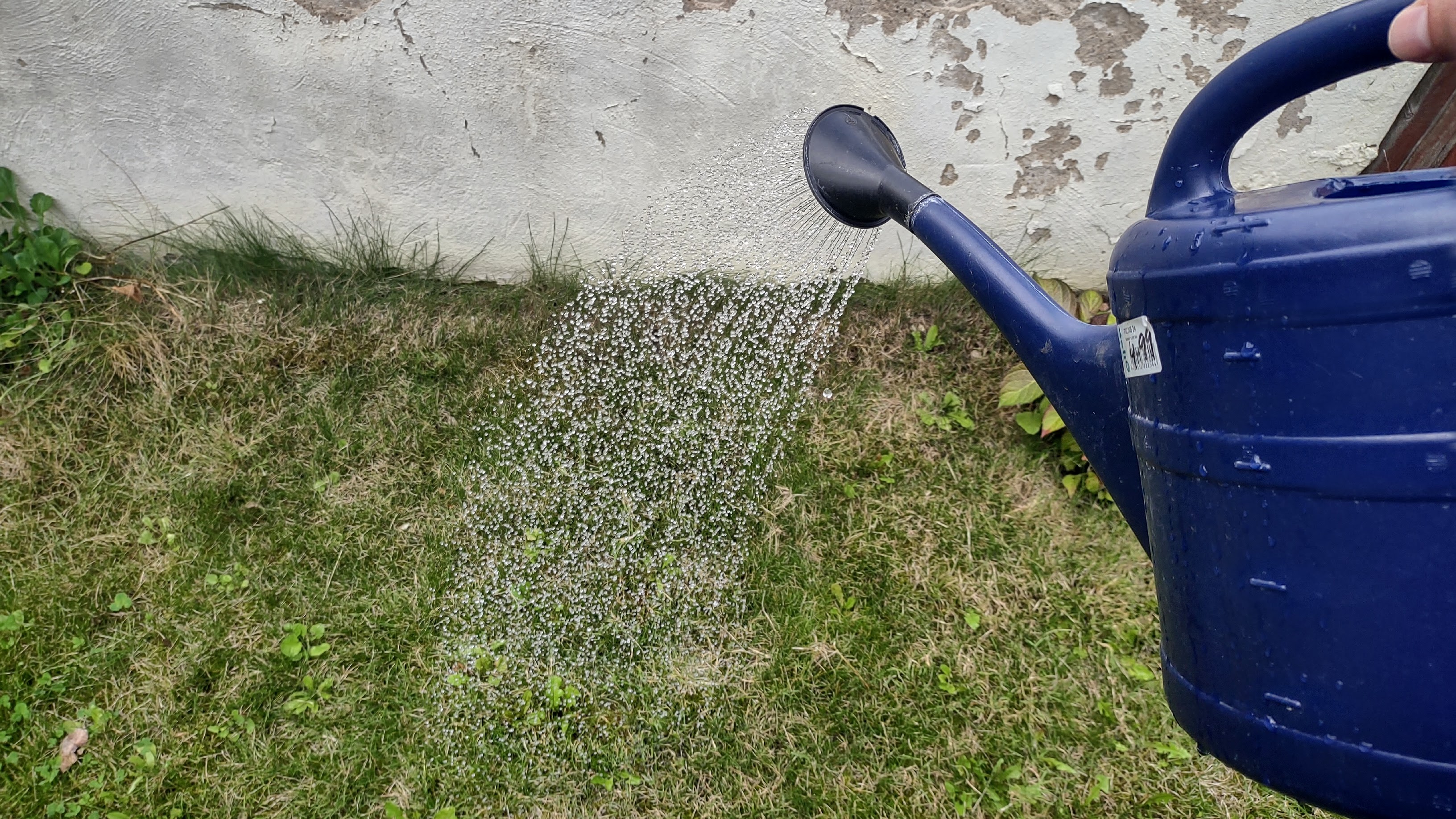
Now’s the time to treat the grass kindly. Water everywhere you’ve dethatched, using a watering can or sprinkler system. If there are bare patches left over from vigorous dethatching, you may want to sprinkle over some grass seeds to regrow those parts of the lawn.
FAQs
When should I dethatch a lawn?
While there’s some debate over when exactly is the best time for dethatching, most experts agree that this task should be done at a time of year when the grass will have several weeks of warm weather regrowth ahead of it, after dethatching.
The ideal time to dethatch may vary depending on your local climate. Many expert sources recommend dethatching during early spring or fall if you’re somewhere relatively cool, such as WA, RI or the United Kingdom; or during late spring or early summer you’re somewhere hotter.
How long does it take to dethatch a lawn?
The time taken to dethatch a lawn will depend on the size of the lawn, how thoroughly you dethatch the grass, and the type of dethatcher used.
Usually, an electric or gas-powered dethatcher can dethatch quicker than a manual dethatching rake. However, powered dethatchers are also more aggressive and harder to control than most manual dethatching tools.
Lightly dethatching – removing a relatively low proportion of thatch – is naturally quicker and easier than intensively dethatching.
If you have a large lawn and you need to work out how long it’ll take to dethatch it using your favored approach, use a stopwatch (or app!) to time how long it takes to dethatch a test patch of roughly one square yard, then multiply that time by the square-yardage of the lawn.
Should I dethatch or scarify my lawn?
Dethatching and scarification are both processes intended to remove thatch from the lawn. However, whereas dethatching digs up mostly thatch, scarification tends to pull up a lot of healthy grass too.
Some lawn care experts regard scarification as an essential requirement for keeping lawns immaculate. It certainly makes a more radical difference than dethatching. However, dethatching is widely regarded as a gentler alternative to scarification, which does less damage while preparing your lawn for a fresh start.
Final thoughts
Reviews
Whirlpool 24" Stainless Steel AI Dishwasher Review
Napoleon TravelQ PRO285 Portable Gas Grill review
Dreame L40 Ultra Robot Vacuum Cleaner and Mop review: almost hands-free cleaning
GE Profile Smart Mixer with Auto Sense review: a powerful, thorough mixer
Echo eForce DPB-2500 review: a leaf blower as a snow removal tool?
DPAS-2100 + Pro Paddle Attachment review: a new way to remove snow this winter?
Midea MAD53109APK 5.5QT Air Fryer review: a small, simple, and highly effective option
Eureka J15 Pro Ultra Robot Vacuum review: hands-free cleaning for busy families
As we’ve seen, dethatching is a straightforward task, with only a few steps needed to dethatch the lawn. However, when we consider the potential to damage your lawn through overzealous dethatching, this is clearly a yard job that needs to be done with thought and care.
If you’re uncertain of how your lawn will respond to dethatching, we would recommend lightly dethatching on your first attempt. This will allow you to see how quickly the grasses recover and regrow. You can then dethatch more intensively next year, if dethatching does seem to improve your lawn.
Sign up to receive the latest news, reviews, buying guides and deals direct to your inbox

Pete has reviewed hundreds of gardening products for titles including TopTenReviews, Ideal Home and the London Evening Standard, as well as writing articles on diverse topics for other publications such as The Guardian and BBC Good Food. Pete loves spending time in his yard – although, having just read The Day of the Triffids by John Wyndham, he is regarding his plants with a newfound suspicion.
